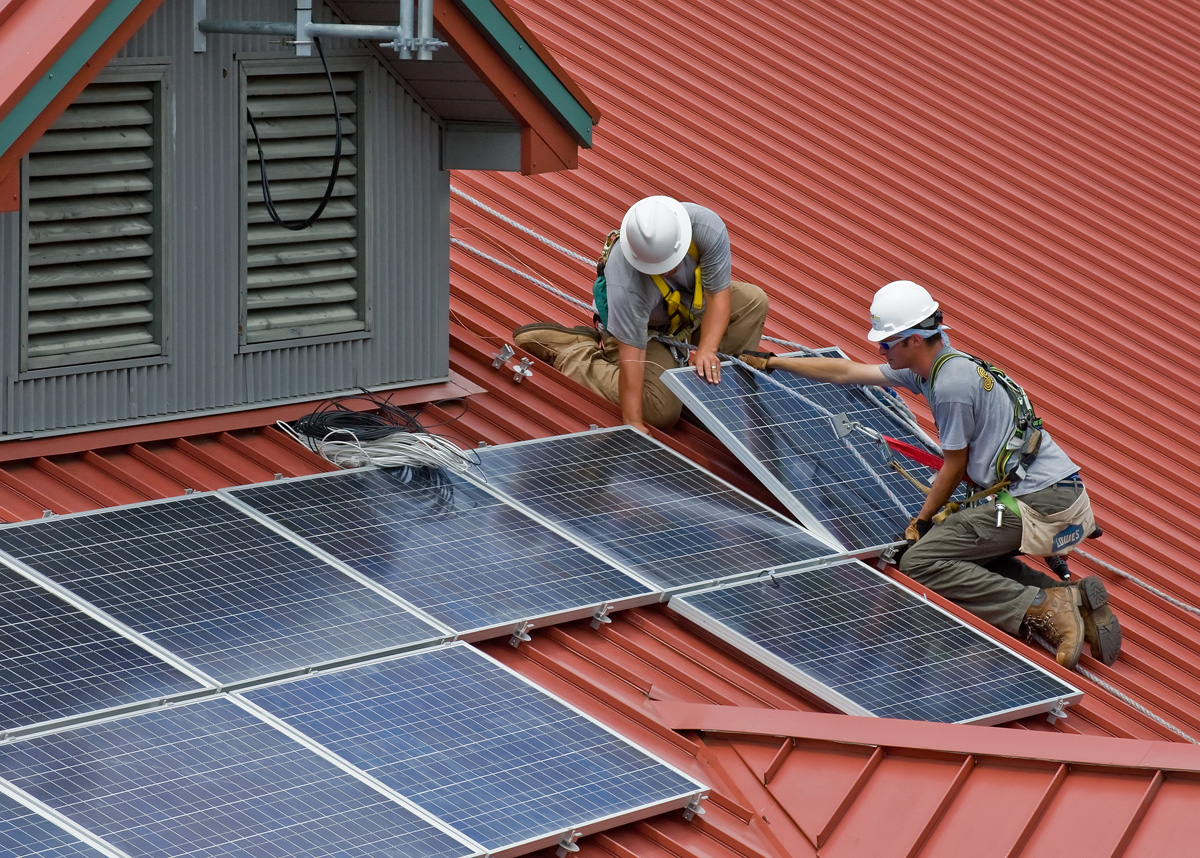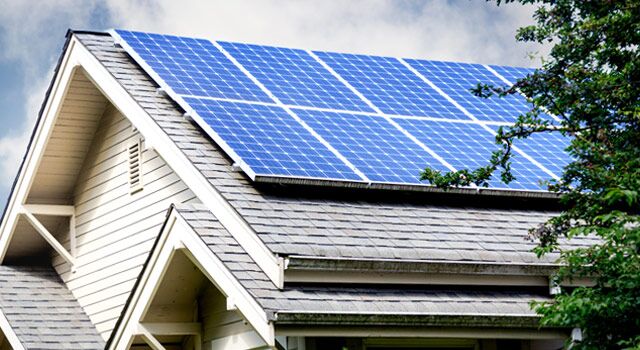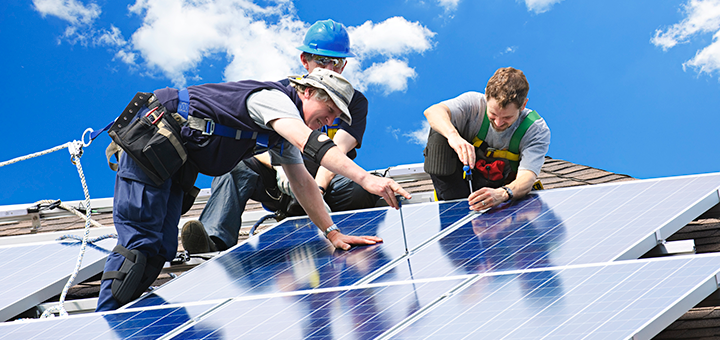Residential Solar Installation: A Complete Guide
Wiki Article
Exploring the Various Kinds of Solar Panels and Their Unique Advantages
The landscape of solar panels uses numerous options, each with distinctive benefits matched to various applications. Monocrystalline panels stand out for their efficiency and appearances, while polycrystalline models appeal to budget-conscious consumers. Thin-film innovation offers versatility in setup. Ingenious styles like bifacial and building-integrated photovoltaics even more improve the charm of solar power. Understanding these differences is necessary for making informed decisions. The question remains: which type will best fulfill details energy requirements?Monocrystalline Solar Panels
Although various sorts of solar panels are offered, monocrystalline solar panels are often related to as one of the most effective option. These panels are made from a solitary crystal framework, typically silicon, which allows them to transform sunshine right into power better than other types. The performance prices for monocrystalline panels can range from 15% to over 22%, making them a popular selection for household and industrial installments where area is limited.
Polycrystalline Solar Panels
Polycrystalline solar panels are created using a distinct production procedure that entails melting several silicon crystals together. This method can lead to advantages such as reduced production costs, making them a preferred selection for lots of consumers. Their performance and efficiency elements might vary compared to other types of solar panels, calling for careful consideration.Production Refine Advantages
The manufacturing procedure of polycrystalline solar panels provides several benefits that add to their allure in the sustainable energy market. The production makes use of silicon scrap, which decreases waste and decreases material prices, making it economically sensible. Unlike monocrystalline panels, the manufacturing of polycrystalline panels entails easier and much less energy-intensive techniques, resulting in a smaller carbon footprint. In addition, the casting process permits the production of several cells at the same time, boosting performance in production. This technique additionally leads to a much more consistent structure, which can boost the general efficiency and durability of the panels. Polycrystalline solar panels offer a cost-effective option for consumers while advertising lasting manufacturing methods within the market.Performance and Performance Elements
Exactly how do performance and performance factors influence the performance of polycrystalline solar panels? These panels usually show reduced efficiency rates, averaging around 15-20%, compared to their monocrystalline counterparts. Elements such as temperature level level of sensitivity, shielding, and the angle of installation substantially impact their performance. Polycrystalline panels tend to carry out much better in cooler climates however might battle in high temperatures, leading to decreased output. Furthermore, their performance can be impacted by dust and debris accumulation, necessitating regular maintenance. Despite these challenges, polycrystalline panels are much more affordable and offer a solid equilibrium in between price and efficiency. Recognizing these performance and efficiency variables is essential for customers looking for to optimize solar power manufacturing and general system efficiency.Thin-Film Solar Panels
Thin-film solar panels stand for a flexible and lightweight alternative in the solar power landscape. These panels are built by depositing one or even more slim layers of photovoltaic product onto a substrate, which can consist of plastic, glass, or steel. This production process enables higher adaptability in layout and applications compared to traditional crystalline photovoltaic panels.
Thin-film innovation usually features reduced efficiency prices, however it makes up for this with reduced manufacturing costs and improved performance in low-light problems. Their lightweight nature makes them appropriate for installation on varied surfaces, consisting of curved structures and lorries. Furthermore, these panels can be incorporated right into building products, offering aesthetic benefits alongside energy generation.
Bifacial Solar Panels
Bifacial solar panels are obtaining attention for their enhanced effectiveness and efficiency, as they can capture sunlight from both sides. This dual-sided style permits increased energy manufacturing, specifically in reflective environments. In addition, their installation offers prospective expense advantages, making them an appealing option for various applications.Effectiveness and Efficiency
The performance and performance of solar panels are crucial consider identifying their performance in energy generation, with bifacial solar panels attracting attention for their innovative design. These panels feature solar batteries on both sides, allowing them to catch sunshine from numerous angles. This dual-sided capability improves energy outcome, specifically in settings with reflective surface areas, such as snow or sand. Bifacial solar panels can raise power manufacturing by 10-20% contrasted to typical monofacial panels. Their capacity to harness indirect sunshine adds to their general performance, making them an engaging option for numerous applications. Advancements in technology proceed to enhance their performance metrics, solidifying their area in the eco-friendly power landscape as an extremely effective solution for solar power generation.installation and Price Advantages
When thinking about the advantages of bifacial photovoltaic panels, the installation process and cost benefits are significant factors that can affect decision-making for both domestic and commercial applications. Bifacial panels can be mounted on numerous structures, consisting of rooftops and ground installations, permitting for versatile release. Their capability to absorb sunshine from both sides enhances power generation without needing additional panels. This effectiveness can lead to minimized overall installation prices, as fewer units may be needed to accomplish preferred power outcomes. In addition, their longevity usually equates to lower upkeep expenses gradually (Residential Solar Installation). As a result, the lasting financial advantages, incorporated with installation versatility, make bifacial solar panels an enticing choice for those seeking lasting energy servicesBuilding-Integrated Photovoltaics (BIPV)
Building-Integrated Photovoltaics (BIPV) stand for a significant development in solar modern technology, flawlessly incorporating solar batteries right into structure materials such as roofings, home windows, and frontages. This cutting-edge method not only produces renewable resource but visit here also improves the visual appeals and performance of buildings. BIPV systems can change traditional structure products, reducing the total price of building while adding to energy performance.The integration of solar modern technology into building style permits much better room usage, as these systems can be mounted without calling for additional land. On top of that, BIPV remedies are adjustable, allowing designers to produce special styles that complement the structure's total look. The double functionality of BIPV-- serving both as a power generator and an architectural part-- uses considerable advantages in city settings where area is limited. As awareness of lasting building methods expands, BIPV is coming to be a progressively attractive option for home owners and programmers alike.
Concentrated Photovoltaic (CPV) Solutions
Concentrated Photovoltaic (CPV) systems represent an advanced solar modern technology that mirrors or uses lenses to focus sunlight onto high-efficiency solar cells. This ingenious technique permits the collection of substantially even more solar power than conventional photovoltaic or pv systems. By focusing sunlight, CPV systems can attain higher performances, usually surpassing 40%, making them especially suitable for locations with high straight sunlight.In addition, CPV systems normally require much less acreage compared to standard solar panels, as they create more power from a smaller impact. These systems typically include tracking systems that readjust the placement of the lenses or mirrors to comply with the sunlight's motion, making best use of energy capture throughout the day. Nonetheless, CPV technology is finest matched for particular geographical areas, where direct sunlight is bountiful, limiting its applicability in areas with frequent cloud cover. In general, CPV systems offer an encouraging option for improving solar power manufacturing in ideal environments
Comparison of Solar Panel Effectiveness and Price
Although numerous photovoltaic panel technologies exist, their effectiveness and expense can greatly differ, influencing consumer choices and market dynamics. One of the most common kinds-- polycrystalline, thin-film, and monocrystalline-- show unique characteristics in performance and pricing. Monocrystalline panels have a tendency to provide the greatest performance prices, commonly going beyond 20%, yet they normally include a greater rate tag. On the other hand, polycrystalline panels are usually extra budget friendly, with performances around 15-20%, making them a prominent choice for budget-conscious customers. Thin-film modern technologies, while less efficient at about 10-12%, give versatility and lower installation prices, attracting particular applications.Ultimately, picking the appropriate solar panel includes evaluating the equilibrium in between efficiency and price. Consumers must consider their power needs, spending plan restrictions, and long-term cost savings potential, as these variables will determine the most effective choice for their solar power system.
Often Asked Inquiries
The Length Of Time Do Solar Panels Typically Last Prior To Needing Substitute?
Solar panels normally last in between 25 to thirty years before needing replacement. Their durability depends on numerous factors, consisting of top quality, installation, and local ecological conditions, which can affect their efficiency and durability with time.
Can Solar Panels Operate In Cloudy or Rainy Issues?
Solar panels can without a doubt function in gloomy or rainy problems, albeit at minimized effectiveness. They still catch scattered sunlight, allowing for my sources power generation, though power outcome may be considerably less than on warm days.What Upkeep Is Required for Solar Panels?
Regular upkeep for solar panels includes periodic cleansing to get rid of dirt and debris, inspecting for damage, guaranteeing connections are safe and secure, and examining system performance. Normal exams can boost performance and prolong the life-span of the panels.Exist Any Type Of Ecological Impacts From Manufacturing Solar Panels?
Yes, manufacturing solar panels can have ecological impacts, consisting of resource removal, power consumption, and waste generation. Developments in technology purpose to lessen these effects, advertising even more sustainable practices in manufacturing and reusing procedures.Exactly how Do I Pick the Right Solar Panel for My Home?

Numerous kinds of solar panels are offered, monocrystalline solar panels are typically pertained to as the most efficient option. Thin-film solar panels represent a light-weight and functional alternative in the solar power landscape. click for more info The efficiency and efficiency of solar panels are vital aspects in establishing their performance in energy generation, with bifacial solar panels standing out for their cutting-edge style. Building-Integrated Photovoltaics (BIPV)
Building-Integrated Photovoltaics (BIPV) represent a significant evolution substantial development technology, seamlessly incorporating flawlessly integrating into building materials structure as roofs, windows, and facades. Concentrated Photovoltaic (CPV) systems stand for an advanced solar innovation that mirrors or uses lenses to focus sunlight onto high-efficiency solar cells.
Report this wiki page